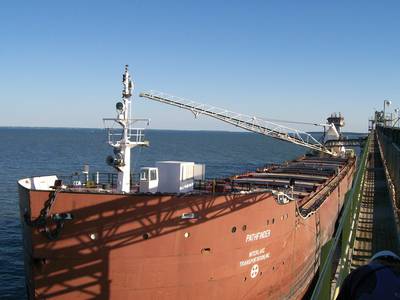Great Lakes Coal Trade Down 8.2 Percent in 2012
Shipments of coal on the Great Lakes totaled 25,347,709 tons in 2012, a decrease of 8.2 percent compared to 2011. The trade was 25 percent off its 5-year average.
Shipments from Lake Superior ports - 15.1 million tons - were just about even with 2011. Included in that total were 1.3 million tons shipped to Québec City for loading into oceangoing vessels and delivery overseas.
Loadings at Chicago terminals totaled 3.2 million tons, a decrease of 14.5 percent from 2011, but a slight increase over their 5-year average.
Shipments from Lake Erie ports totaled 7 million tons, a decrease of nearly 19 percent compared to 2011.
The impacts of falling water levels and lack of adequate dredging were clearly evident as the year came to a close. The largest coal cargo shipped through the locks at Sault Ste. Marie, Michigan, in December totaled 62,043 tons. The largest coal cargo passing through the locks during 2012 was 64,706 tons. When near record-high water levels offset the lack of dredging in the late 1990s, a U.S.-flag laker was able to carry nearly 71,000 tons in a single trip.
According to U.S. Army Corps of Engineers estimates, more than 17 million cubic yards of sediment must be removed from Great Lakes ports and waterways before vessels will be able to carry full loads.
Lake Carriers’ Association represents 17 American companies that operate 57 U.S.-flag vessels on the Great Lakes and carry the raw materials that drive the nation’s economy: iron ore and fluxstone for the steel industry, aggregate and cement for the construction industry, coal for power generation, as well as salt, sand and grain. Collectively, these vessels can transport more than 115 million tons of cargo per year. Those cargos support more than 103,000 jobs with an average wage of $47,000.













